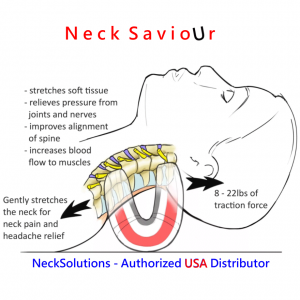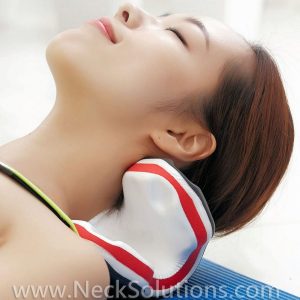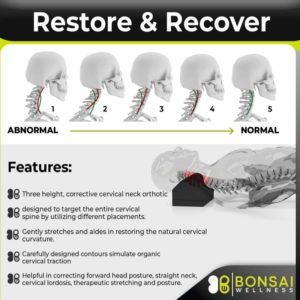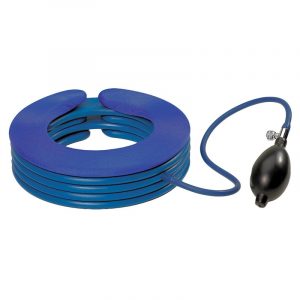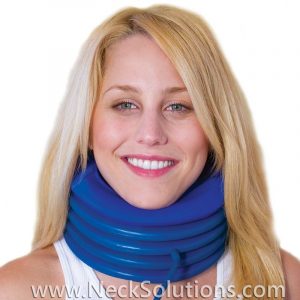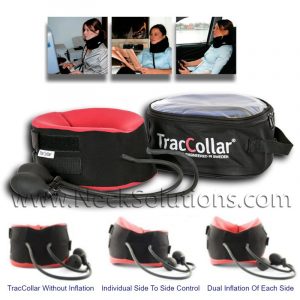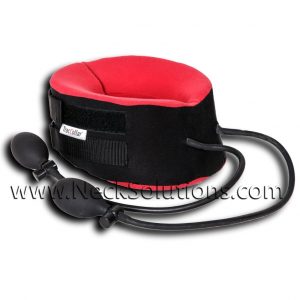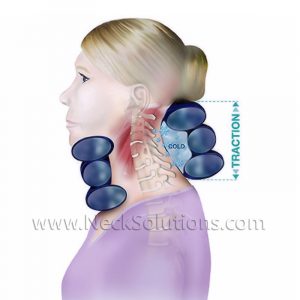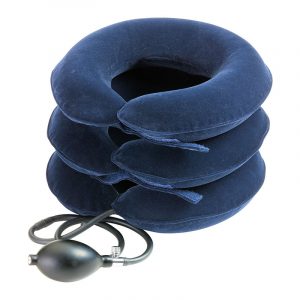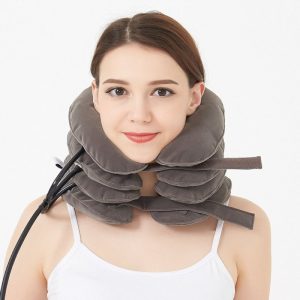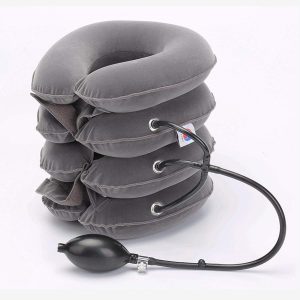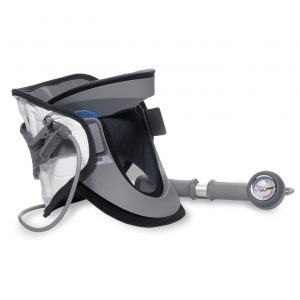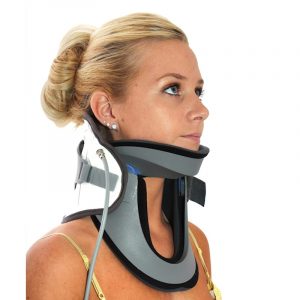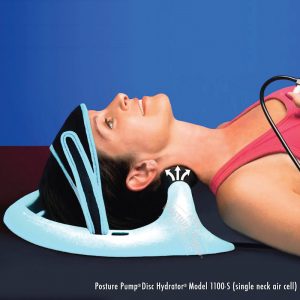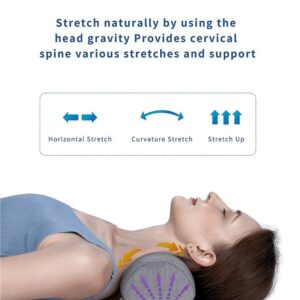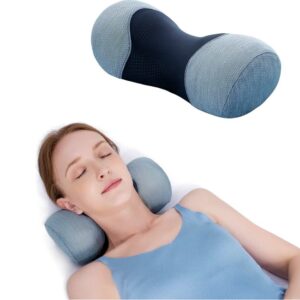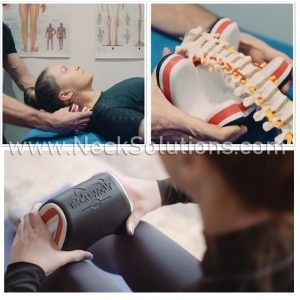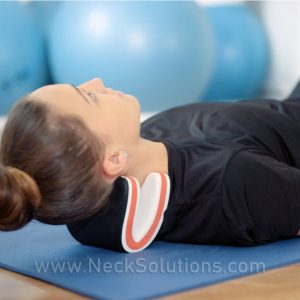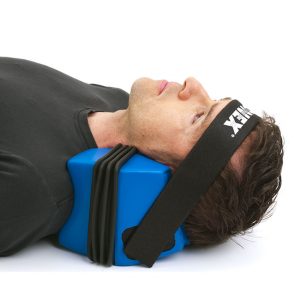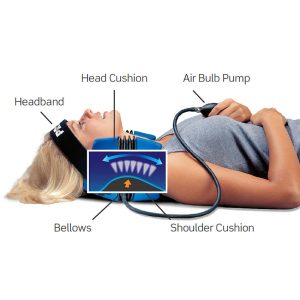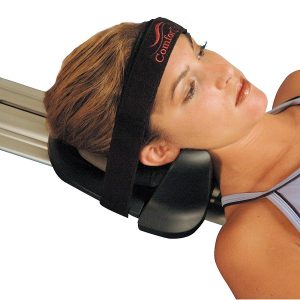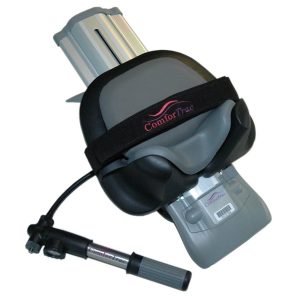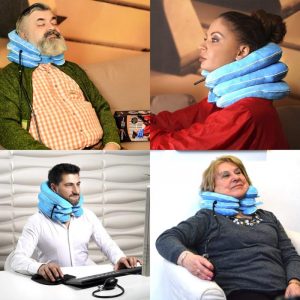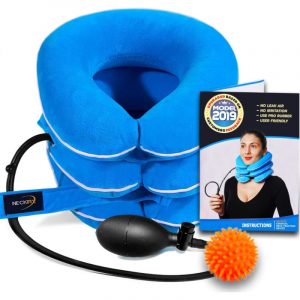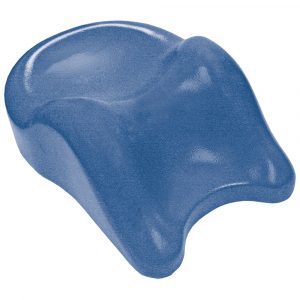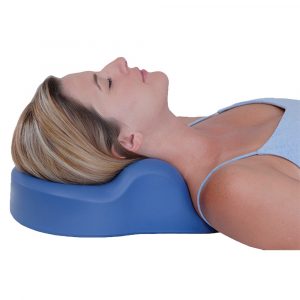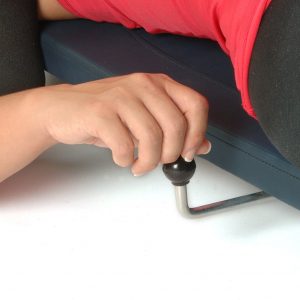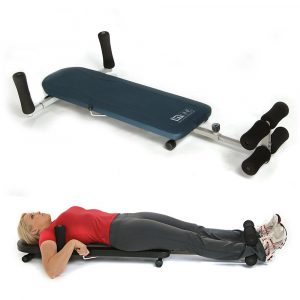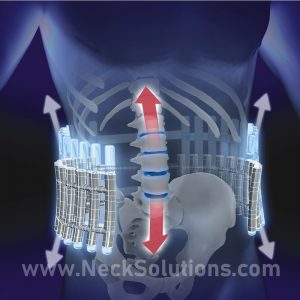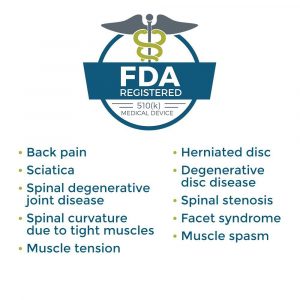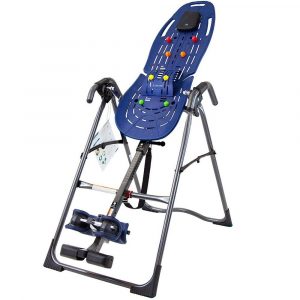Spinal Traction At Home For Neck & Back Pain Relief
What Is Spinal Traction
Spinal traction is a distraction force applied to the cervical spine (neck) and lumbar spine (back) to separate the spinal bones and relieve pressure on sensitive structures responsible for pain. The force tractions or decompresses the spine creating conditions that may benefit pain syndromes resulting from compression or gravity forces, which compress together the bones that can narrow openings for nerves and squeeze spinal discs.

What Does Traction Do?
The decompressing force of spinal traction takes off pressure from pain producing structures like discs. Scientific studies indicates disc damage and pressure causes significant amounts of pain related neck, shoulder, arm, hand, back and leg. Degenerative spinal conditions like arthritis can narrow nerve and blood vessel openings causing pain, numbness and tingling in the arms and legs as well as inflammation in the back and neck. Discs may tear and cause back and neck pain as well as herniate, which may also lead to symptoms of a pinched nerve.
Why Is The Disc So Important?
The discs of the spine serve as spacers to keep correct spinal alignment and allow motion in between spinal bones. Preserving disc height is essential to the health of the spine and remaining free from related pain syndromes. The disc has no direct blood supply. In fact, it is the largest structure in the body without a blood supply. Since it does not receive oxygen carrying blood as the heart beats, it must use a process called diffusion to acquire nutrients essential to maintain a healthy disc and to increase it’s ability to heal.
What Conditions Does It Treat?
Herniations and bulging of a Neck Disc and Back Disc, Degenerative Disc Disease, Spondylosis, Facet Joint Arthritis, Sciatica, Pinched Nerves, Radiculopathy, and other conditions.
How Does It Help?
It is a non-surgical therapy and may be quite effective to speed up healing, offering rapid and sometimes surprising pain relief. It can be used to help remove compressive forces. It may provide relief where other methods have failed, and may help to achieve a more rapid progression to rehabilitation. In fact, a study has indicated better outcomes for cervical radiculopathy when using traction as part of the rehabilitation.
The decompressive forces straightens the spine, removes nerve, joint and pressure on blood vessels. In certain instances, it can help to relieve muscle spasms when neck muscles are sore from holding the head up in poor postures and devices like traction pillows can help restore the cervical curve. With the use of technology, inflatable collars and back belts incorporate traction to apply without being tied down to machines, weights or pulleys, so daily activities can be resumed faster.
As a result of disc disease, inflammation and it’s resulting pain along with nerve irritation can cause the spinal muscles to become tense or hypertonus. Traction, by increasing disc height and allowing more room for the nerves can induce increases in blood flow that may decrease muscle tension and pain by removing inflammatory elements. This can aid in rehabilitation through more effective stabilization exercises.
The disc is rhythmic tissue, experiencing a cycle of higher loading (activity phase), followed by a cycle of low-load recovery (resting phase). Under high loads, the pressurized fluid flows to areas of lower pressure through the outer annulus fibrosus and the cartilaginous end plate, which results in decreased disc height, annulus bulging and an decrease in fluid pressure inside the gelatinous nucleus pulposus.
During the recovery period, the process is reversed with high osmotic pressure inside the disc increasing fluid flow to the nucleus. Exchange of nutrients and metabolites that occurs with this fluid flow during this cycle maintains disc cell homeostasis/repair.
Disruptions in this natural cycle leads to imbalance and loss of repair. This leads to increases in inflammatory and destructive chemicals that can cause degeneration, altered function and pain. This is seen in shift workers, excessive loading, poor postures and ergonomics, as well as injury. Traction of the spine seeks to restore this homeostasis and repair by concentrating increases in the resting phase.
Techniques Of Use
Generally, there are two techniques of applying traction to the spine: Static & Intermittent. With static traction, the force is applied and held for a period of time (usually 5 – 20 minutes) then released. Using intermittent traction, the force is applied, then released. This is repeated a number of times (usually 5 – 15 minutes). The reasoning behind intermittent is that it pumps the disc, allowing better transfer of fluid and nutrients. However, it is clear that this is not always the case. While various studies indicate preference of one technique over the other, it seems that the condition of the disc may be the guide as to which techniques will provide better results. There is also dynamic cervical traction.
- According to a 2017 study in Musculoskeletal Science and Practice, in middle aged individuals, static traction provided better transfer or diffusion of water into the disc than in younger individuals. Older discs tend to have more degeneration and less pliability, therefore; age or more specifically condition of the disc may indicate the best technique to use. The more degenerated the disc, the more likely for a better response to static traction rather than devices that “pump the disc” intermittently.
So, the question of to pump or not to pump the disc seems to be dependent on age or degree of degeneration. Older and more degenerated discs prefer a more static, held traction force. This also related to inversion therapy technique, as in “rocking”. This may also be related to structures around the disc like joints, ligaments, tendon and muscles, which may require more sustained forces to achieve relaxation and decompression.
Use & Indications
Traction should not be used for a recent injury or condition where there is inflammation, like a new whiplash injury, pulled or strained muscle or when a fracture is present. Cases vary using traction after surgery is healed with continued symptoms. The surgeon should advise on spinal traction, because it should not be used on any unstable condition or with certain disease conditions. If you are not sure, always ask your doctor.
It may be beneficial when used after the acute stage – about 1 week for neck and back pain conditions. Discs and facet joints producing pain may respond to early application of traction. Often, these devices produce a good initial response, with many experiencing pain relief or a reduction of symptoms in 6 to 10 applications, however, devices vary in form and application, so results will vary and there are no guarantees of success.
Because units vary, application should follow instructions from the manufacturer or doctor, but common application is 3 to 5 times per week for about 15 minutes. Home devices should always be used to tolerance and never produce pain.
Are there Side Effects?
Home units are generally safe and are under your control. If you experience discomfort, lessen the force and/or time of use. If you experience pain, discontinue and consult your doctor. Spinal traction may cause muscle spasm if you are resisting forces that are too great. Heat applications prior to traction can reduce this side effect, however, when under your control, you should gradually introduce traction forces and times that are comfortable for you. Going easy at first gives you time to get familiar with the device and the sensation it produces. Too much, too fast will not produce the desired results.
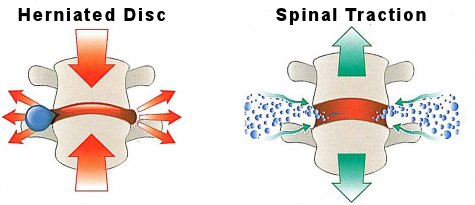
Is Spinal Traction All I Need?
Traction should be a part of pain management and may add benefit to other types of home therapies for neck & back pain. By using in conjunction with other therapies, spinal traction may offer better results and improved healing. Individuals may require short periods using traction, while others may require its use for many years, depending on the condition.
Sometimes, individuals find spinal traction is all that they need for pain relief, better spinal alignment and help with combating the effects of compression, improving motion and increasing function.
- A 2017 study in the Journal of Back and Musculoskeletal Rehabilitation showed individuals receiving non invasive spinal decompression had greater reductions in disc herniation size when added to standard therapy treatments, including electrotherapy, massage and stabilization exercise for fifteen session.
- A 2019 study in the Spine Journal found immobilization decompression traction interrupts the cascade cycle of disc degeneration and 2 to 6 weeks is a sensitive period for regeneration of the disc. Future studies are recommended to optimize the use of traction devices for possible regeneration. So, While there are ongoing studies for regeneration using stem cells, PRP, artificial discs and more, we can never forget the ability of the body to initiate it’s own healing.
Goals Of Traction
- Increase height of the intervertebral disc
- Increase the size of the intervertebral foramen (nerve opening) up to 28%
- Increase a negative pressure gradient within the disc through hydration, which aids in decreasing pressure pain sensitive nerves
- Restore motion to the spine, which is part of improving activities of daily living and reducing spine stress that causes pain
- Stimulate tracts of nerves from the spine to the human brain to initiate nerve reflexes that relieve pain and allow for normal spinal motion.
The function of spinal traction is to produce a vertical stretch in the spine, relax the back muscles, and increase disc height. Traction works by separation of vertebral bones, distraction, widening of the nerve space between bones, and gliding of facet joints, and stretching of the spinal musculature. Straightening of the spinal curves for those devices without extension. This is important because people that stand all day tend to have an exaggerated lumbar curve which can be a risk factor for low back pain development. Spine traction and inversion traction devices seem to be effective in the reduction of low back pain and discomfort.
